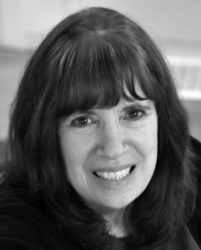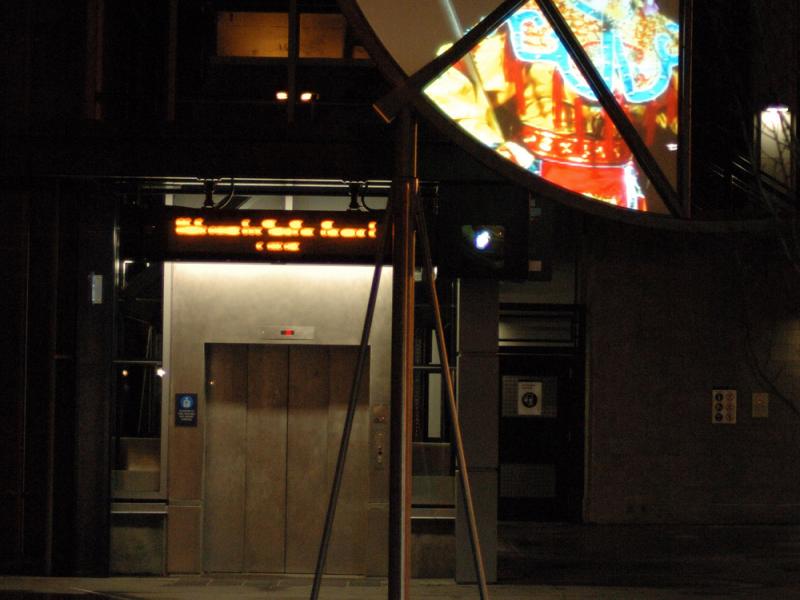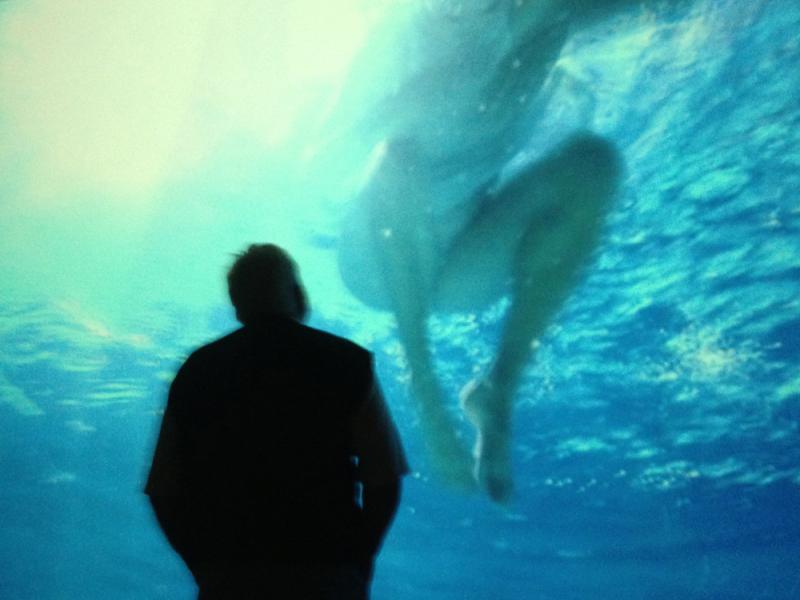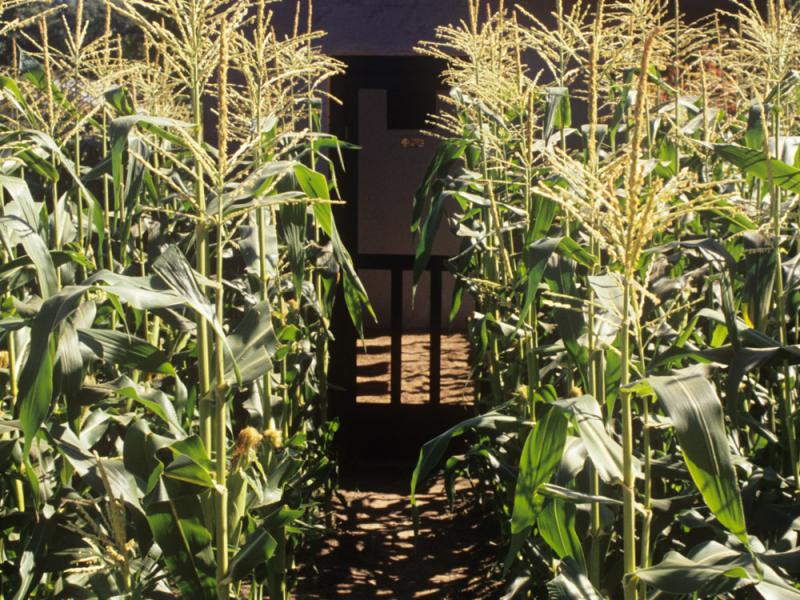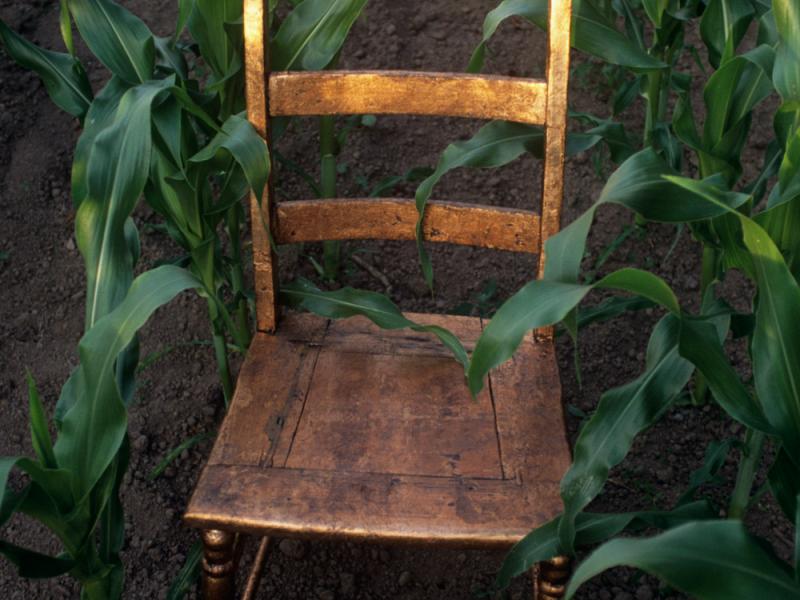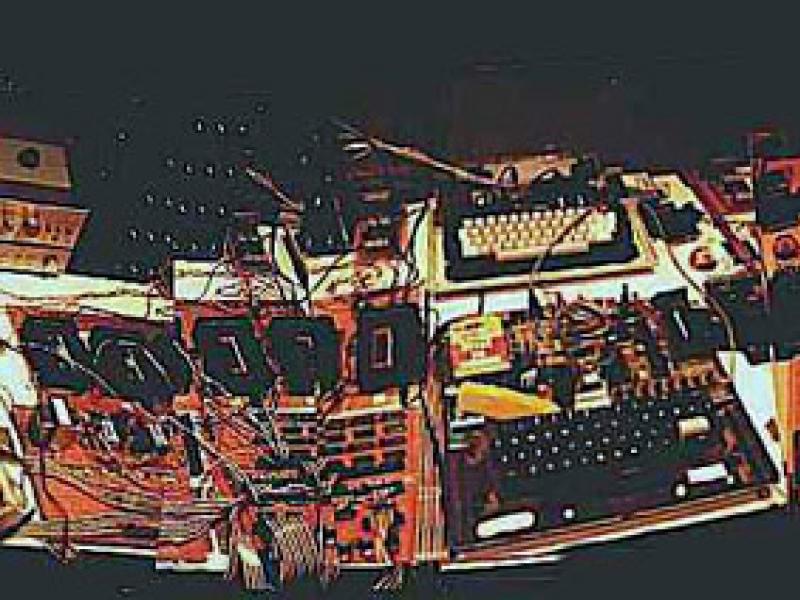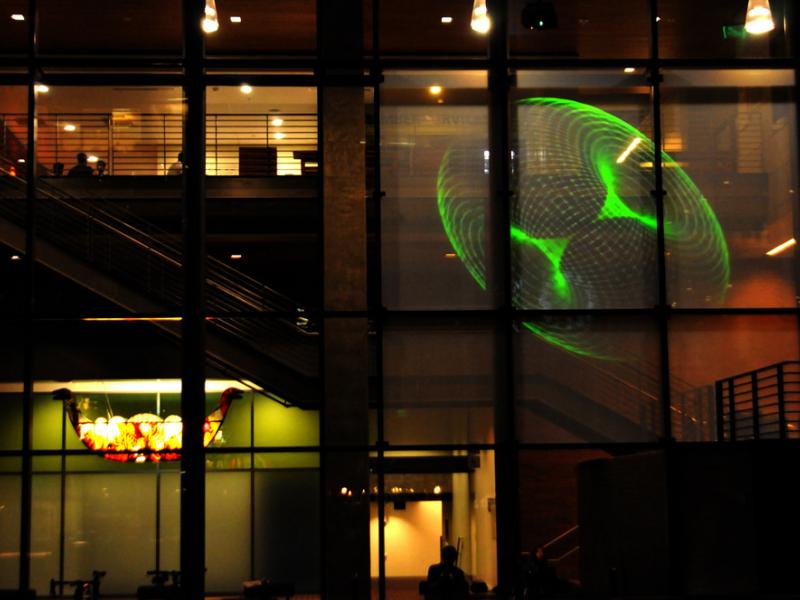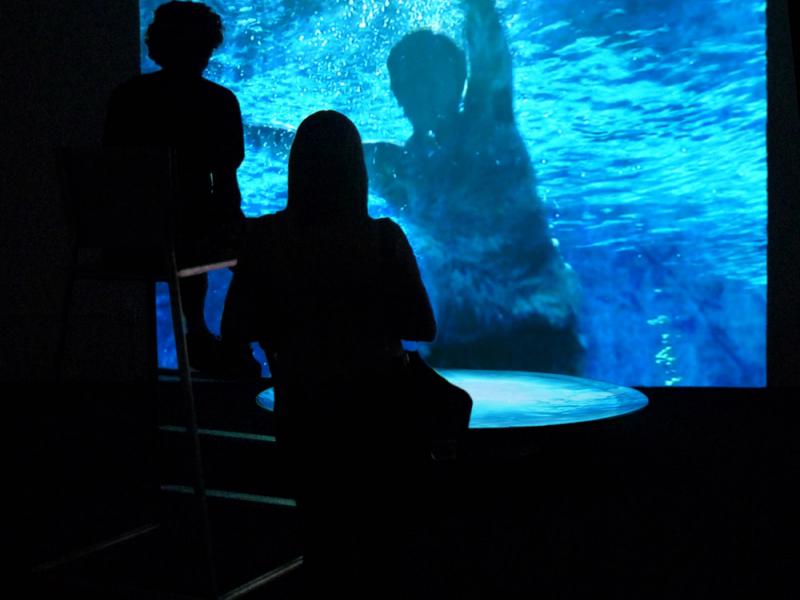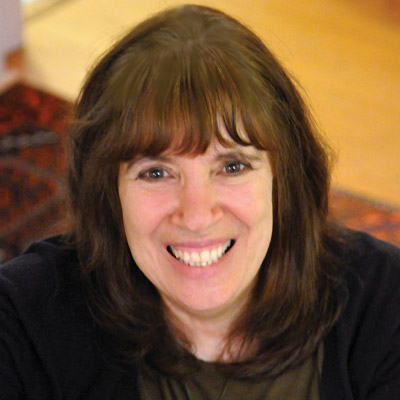
Since 1984 Fernanda D’Agostino has completed twenty-five publicart commissions and fifteen solo exhibitions, many incorporating moving images in novel ways. Her work has been recognized by a Bronson Fellowship, a Flintridge Foundation Fellowship, grants from the National Endowment for the Arts and The Andy Warhol Foundation, and state fellowships in Montana and Oregon. Recently she received a Ford Family Foundation Opportunity Grant to fund her installation, The Method of Loci.Fernanda is a pioneer in the use of outdoor video projections in public art. Intellectual Ecosystem, her permanent video projection commission for Portland State University, was recognized by a 2011 Year in Review Award by Americans for the Arts. Her interactive video installations and single channel videos have been exhibited through the United States and in China,England, Germany, France, Spain, Canada, Italy, Cuba, Columbia, Angola and Czechoslovakia.
Idioma original: Inglés
Fecha de Publicación: 20/08/2014
What are your main fields of experimentation, research and creation today? And why?
Throughout my career I’ve thought of my work as having two interrelated branches. My “winter work” is focused on interactive installation that employs architecture, sculpture, interactive/reactive new media, and any number of other strategies, to engage viewers in an active, hands on exploration of an invented place. This work is very introspective, focusing on the human condition and on the interior architecture of thought, dreams and stream of consciousness. I’m interested in how the physical world we move through forms the scaffolding of our interior life. In my installations Ichoreograph viewers’ exploration of labyrinthine spaces, leading to ever-deeper reflection on their lives and the world around them. Video imageryfor these environments originates in my own experience and thoughts, but I strip it of anything that references a specific time or place, so each viewer can bring their own experience and cultural associations to the space. Recently the success of this strategy was confirmed for me when a one hundred and two year old Japanese man related my latest installation, The Method of Loci, https://vimeo.com/99194788 to an ancient Japanese philosophical text, a text lodged deep within his consciousness that colored his experience of the world. I had no previous knowledge of this text, but experience in the immersive space of the installation triggered his memory of its influence on his life. His experience of the work was very deep-and unique to him.
My “summer work” https://vimeo.com/99260710 is land based and oriented outward to the world and its challenges. Here again I engage viewers on a physical level through pathways to explore, places to climb and sit, small buildings to enter, crops to harvest and meals to eat. Food equity and environmental restoration are two primary orientations of this work. As in my “winter work” I use spaces choreographed for exploration, this time to engage viewers in deeper contemplation of our relationship to the earth and the rest of its species; the cultural assumptions that color this relationship; our physical dependence on it; and its necessity for our psychological well being.
In both bodies of work creating spaces where the viewer becomes a participant rather than a passive observer is a central concern. A danger of our media driven world is that nothing seems real any more. By combining new media with a physical engagement and opportunities for viewers to participate in the work in various ways,I hope to combat that sense of detachment and unreality.
Why? If any one motivation is central to my work it is a desire to break through the sense of detachment and utilitarianism that seems so prevalent in society today. Interactive installation is an area of art making that is extremely difficult to sustain. However for thirty years I’ve felt that a fully immersive environment, particularly one where the viewer was physically engaged in a number of ways, would result in the deepest experience. Reactive or interactive new media is a way to mimic the processes of thought in a way that is mysterious to the viewer. Combined with a powerful physical experience it allows for a whole new level of engagement.
Is there a role for artists in society, out of the so-called «entertainment» (or just for self-indulgence)?
In the United States right now I am finding this a very difficult question, one that has actually been plaguing me in recent months. It seems that just as the world’s situation is becoming most dire, “the art world” in the USA is revolving more and more around art as an investment commodity for the 1%. Our system of art in public places offers an important alternative and is far more democratic, however the committee process that guides most of these projects presents its own set of restraints. Social Practices work is another arena in which an artist can carve out an activist role for themselves and several of my works have had social practices strategies embedded within their creation. The ability to make work that moves beyond entertainment, or the production of an investment object depends on independent funding. Hyperallergic recently published two articles addressing the way the US art world pushes back against work with challenging content, one comparing recent public works in NYC by Jeff Koons and Kara Walker, and a second examining the resurgence of abstract expressionism in painting. In examining a range of works, only Kara Walkers’ recent installation at the Domino Sugar Factory was seen to challenge the status quo in any important way. With blue chip art becoming more and more of an investment commodity for collectors in the USA, there is a dangerous pressure to remain abstract, clever or tongue in cheek. The art that inspires me most these days often seems to originate in Canada or Europe. Generous public funding for individual artists is crucial to the freedom necessary for the creation of cutting edge work that challenges the viewer to rethink their perceptions of the world. Since we lost NEA funding for individual artists’ projects, it has become more difficult to do truly independent work in the United States. Add to this the trend for cynicism and “art about art,” and in my darker days it’s sometimes difficult to see the role that art plays in society as being very important. Installation, land art and art in public places are where I find my own place in the art world and where I find most of the other work that inspires me. Place based work by necessity transcends the art market and the commodification of our entire lives in a capitalist society. With all my questions about the art world, I still believe art has a crucial role to play in creating an alternative vision of the world, one not tied to the cheap commercialism, appeals to the lowest common denominator, and utilitarianism that dominate our visual world these days. In my own experience, new media, installation and land based work are the arenas where realization of this transformative vision is most possible. Because of their immersive qualities they are the media best able to transport viewers to an alternative experience of the world. In projects where a social practices element can be incorporated in a manner that rigorously supports the content of the work, yet another layer of impact is added.
How do you think the new media arts relates to the [non-artists] community?
Art on screens and tablets, memes (like those produced by Ai Wei Wei’s followers during his imprisonment,) immersive art made for Oculus Rift (Oscar Raby’s powerful Assent for example,) infiltrate arenas customarily occupied by more commercial or banal content. In this way the reach of art has been extended far beyond the confines of the gallery and museum, and new audiences have access to work they would not have experienced otherwise. An example of this in my own work came during a recent period of tumult in the Middle East. For a period of some weeks my Vimeo site was receiving hundreds of views from countries all over the Middle East. On the site I have some impressionisticclips done for a public art commission, one on European History, and the other titled Asian Studies; India. These poetic montages seemed to go at bit viral in the Middle East during the conflict. Their view of their subjects was intuitive in structureand devoid of dogma. I can only speculate on why they had such a big audience during this time of conflict, but they definitely offered a completely different view of the two cultures than the one presented by mainstream media or propagandists of either culture.
In addition to expanding the audience for art, new media has done more than any development in recent history to democratize the means ofart/mediaproduction. This can lead to an avalanche of banal images as HeitorAlvelos sends up in his hilarious “anti-fluffy” work, but it can also give the work of ordinary people or emerging artists outside the art world system a reach and independence unthinkable just a decade ago. The fact that a feature film can be produced using only an IPhone empowers both artists and ordinary people, as we have seen in Max Schlesser’s iPhone documentaries.
Uses of new media that are perhaps tangential to the art world but critically important in other ways occurin situations like TahrirSquare when mainstream journalists are not able to report, or the media is censored by the state. In these situations ordinary citizens can now step in to a critical role normally occupied by trained journalists. The recent release of an app designed by a couple of black American teenagers that allows for court admissible recording of police violence by citizens with smart phones is a different kind of “making” in response to a pressing social situation not being addressed by mainstream society.The last time that so many people were “making” at such diverse levels of inventiveness, sophistication and artistry was during the Renaissance. Although some of these activities can’t really be considered art practice, they create a seedbed out of which new means of production and distribution grow. My MFA thesis advisor, Rudy Autio used to say, “There can never be too many artists,” believing that a packed field of makers allowed for more breakthroughs to be achieved. This is exactly the situation that new media makes possible.
Could you tell us about the «Intellectual Ecosystem» project? – https://vimeo.com/46786080
Portland State University Environmental Studies Professor John Reuter has called for the creation of new metaphors and the identification of characteristic patterns that will allow people to grasp the immensity of natural processes. In Intellectual Ecosystem the metaphor of the ecosystem is adapted as a way of capturing the intertwining strands of research and thought that characterize the modern university and its relationship to the city. Reuter’s system of patterns both inspired the structure of the project and runs as a light motif throughout it. Video projections on the glass façade of the University Academic and Student Recreation Center reinforce the University’s identity as an institution at the cutting edge of contemporary computer science and digital communication. The moving images animate the plaza, engaging both students and the public that passes through campus on the streetcar or that come to PSU for events, reinforcing the identity of PSU as a source of energy and activity in the city.
Reflecting the way ideas inform each other in a university community is a primary goal of Intellectual Ecosystem.A high-powered projector controlled by a dual-graphic processor allows content to recombine in an endlessly variable program. Combined with creative video editing in Adobe Premiere and After Effects, the result is a constantly changing ephemeral display that both reflects the PSU community and juxtaposes images in a way that simulates the creative cross pollination of ideas. Eighteen different faculty researchers and an equal number of student cultural groups were involved as advisors and subjects to develop a series of dreamlike vignettes. Faculty research using advanced digital imaging systems was another important strand woven into the experimental video system. The vignettes are remixed constantly so the video program is never the same. The screen is transparent even when the projector is active, allowing the activities of students inside the building to become another layer in the composition. The projections also pass through the screen, animating the surface of the plaza below. Intellectual Ecosystem was a Public Art Network Year in Review selection in 2011 for its innovative use of moving images in public space.
And the «Abundance and Scarcity» project? – http://www.fernandadagostino.com/galleries/abundance_and_scarcity/02.html
Abundance and Scarcity is in many ways one of the most interactive projects I’ve ever done. An early version of the project titled Traveller’s Rest (1992) incorporated an interactive sound environment by composer/programmer Dennis Kitz. The system collected voices from the site and remixed them with prerecorded digital audio compositions. These audio streams were then distributed to speakers embedded throughout the half-acre site. Unfortunately the state of technology at the time, combined with an exposed site next to a busy interstate made the technological element of Traveller’s Rest extremely short lived. Abundance and Scarcity (1993) was more successful minus the interactive technology. In this work I directly addressed issues of food equity by planting a half-acre of corn and becoming a farmer for a season. Within the crop winding paths led to a copper Granary with a floor covered in several inches of wheat. Viewers who had chosen one path could enter the granary and sit in a contemplative space that included sculptures of “generative” processes and vitrines/windows filled with seeds. Two of the four walls were made of copper mesh and the crop was planted so that the swaying stalks of corn immersed a viewer inside the Granary. Another pathway led some viewers to the “scarcity” side of the Granarywhere they could look in through a tiny door and window mounted high on the wall, but couldn’t enter or participate. I wanted viewers to get a visceral sense of what it might be like to be “on the outside looking in” while surrounded by abundance,and to experience how that condition is mostly accidental. The paths were lined with copper stepping stones marked with sayings about food and hunger from peoples around the world, which spoke to how cultural attitudes color our relationship to food and to the hungry. These paths also led to other destinations around the field where viewers could experience sitting alone amid the crop or observe birds at a sculptural water source. The public was further engaged by participating in public meals at the beginning and end of the project. In autumn the crop was harvested with the assistance of a local “gleaners” group and almost 2000 pounds of sweet corn was distributed to local families in need. The gleaners, and viewers who brought food to eat (or donate to food pantries)to our two meals, had particularly rich experiences of the work because of their acts of participation in the work and in service to the hungry.
Part of your research-creation work is focused on ‘memory”. Could you explain to your interest and your perspective on it?
“Inher seminal study, The Art of Memory, Frances A. Yates describes an ancient mnemonic system for mapping images and text into virtual places along an imaginary journey. Whatever is to be remembered can henceforth be recalled by retracing the steps from one object to another along a path housed within the mind’s eye. Called the method of loci (plural of the Latin locus, meaning place or location)—and also referred to poetically as the memory palace—this system was introduced in Greek and Roman cultures as an empirical ritual for remembering. Orators and storytellers, for example, depended upon the method of loci before the invention of writing. “ After spending a semester in graduate school in Italy, where I studied The Art of Memory,the notion of memory and meaning being embedded in place resonated very strongly for me. In some regards all my subsequent work reflects a desire to reinvest places with a sense of meaning beyond utility and profit-the dominant ways of apprehending the world by our culture. Early works such as Abundance and Scarcity sought to reinvest our relationship with farming, food and hunger with some of their cultural and spiritual dimensions. The desire to link place and meaning/memory also extends beyond my personal work into my public art and my work as a design team artist collaborating on master planning for public places. Intellectual Ecosystemdiscussed in depth above, is an example of collective memory embedded in place. Programming within the system allows these memories-literally collected from the academic community- to behave in a way that mimics the living exchange of knowledge taking place within the surrounding academic community.
Thirty years of investigation into the ties between memory and place culminated in my 2013 project The Method of Loci. https://vimeo.com/99194788 The project took the ancient mnemonic system “ArsMemoriae” as the inspiration to create an interactive environment choreographed to trigger memory, day dreaming and reflection. My interest in creating a physical analogy for memory began with the study of GiulioCamillo’sTheater of Memory, famous during the Renaissance but an ephemeral work now faded from public awareness. That interest is paralleled by a recent revival of interest in “ArsMemoriae” among computer engineers studying memory. The Method of Loci relied on the synthesis of many different disciplines for its impact and combined architecture, new media and sculpture. The installation included three separate channels of interactive video running from three MacBook Pro computers, and several other channels of video running as loops on media players, to animate the entire 2,700-square-foot gallery space of The Art Gym near Portland, Oregon. The portable walls of the Gym and specially fabricated dual sided screen walls divided the gallery into various distinct spaces that flowed into each other. Like the inner architecture of the “ArsMemoriae,” The Method of Loci had passageways, alcoves, rooms, hidden peepholes and niches. As viewers moved through darkened corridors into a series of rooms with various-scaled projections, the mood and scale changed. Programming in Max/MSP-Jitter and Arduino allowed the projections to respond differently to the presence of an attentive viewer than to a hurried passerby. As more attention was given, more layers of time were revealed. Some viewers spent hours exploring the space, reading the texts, climbing into a Life Guard’s Chairfor a different vantage point in one room, or listening to a recorded voice on an old fashioned dial telephone in another. The ancients found that the more dramatic the image the more lasting the memory. The video imagery chosen for The Method of Loci underscored the dramatic, albeit fragile and flickering qualities of memory and reality. Years of field recording and recent work commissioned from dancer/choreographer Linda K. Johnson formed an archive of dramatic loops to mix and remix, placed strategically in the various rooms of the multi-chambered space. Underwater recordings, ancient texts, centuries old fire rituals in the Italian countryside, faces in attitudes of contemplation, migrating cranes, and a burning house are examples of the dreamlike imagery of The Method of Loci.The Method of Loci investigates ideas that have driven Western culture for millennia using cutting-edge 21st century technologies. New media has given us the ability not just to trigger thought, memory and contemplation, but to mimic the mental processes inherent to our inner lives. It is this quality that fascinates me most about new media and that makes it the perfect medium for my place-based investigations. Stephanie Snyder’s ArtForum review of The Method of Loci is a good way to understand one viewer’s experience of the work and of how physical interactivity and reactive new media combine to trigger a powerful viewer experience. http://artforum.com/archive/id=43878
Some of your works are site specific. Could you mention some that were of particular relevance for you, and explain why?
Intellectual Ecosystem was an unusually site specific project because I was embedded in the Portland State University community for a year during the making of the work. In that sense the process of making the work was one of the most site specific things about it. During that year I conducted intense research on the role of digital video and imaging in academic research, and found a large group of faculty members willing to actively collaborate on the production of the project. In many instances my collaborators were using digital media to conduct their researchin ways unfamiliar to me, and these interactions meant a great deal of learning for both parties as we worked to find common ground on which to work together. In other instances I was able to offer professors the opportunity to capture moving images important to their research using the financial resources of the project. For example a geologist famous for his research into the Columbia Gorge was enabled to direct a helicopter shoot of his primary research sites, which provided both footage for the project and new data for his research. Cultivating professional relationships with eighteen different faculty researchers and synthesizing that research into a cohesive whole was mind expanding in the best sense of the word. Placement of the project within Urban Center Plaza was site specific in that it was dictated by the architecture of the new University Center, the plaza, and surrounding buildings. Transparency(openness) is a concept that is very important in a modern democracy and also within academia. The literal transparency of the screen is one way the project responded to the essence of its site. The transparency of the screen also allowed the images to spill over onto the plaza at people’s feet as they traversed the space, mimicking the foundational aspects of some strands of thought. Another facet of my investigation was to uncover how the different disciplines present on an academic campus inform each other and intertwine with the community at large. Constant recombination of the content in real time reflects the endlessly shifting dialog within academia. Intellectual Ecosystem is thus site specific in production, siting and concept.
Two projects forSoundTransit in Tacoma and Seattle, Washington were ground breaking in their integration of permanent video projection systems into gritty outdoor urban spaces. Being site specific in these difficult paces involved a range of challenges. Night and Day(2003) sited at Tacoma Link’s Theater District Light Rail Station turned the light railplatform and shelter into a jewel box theater using theatrical lighting, paving inlays, custom “theater style” seating and new media. During the day the physical infrastructure of the entire light rail platform extends theatergoers experience onto the streetscape. At night a series of videos created in collaboration with local performers are projected onto the station’s fritted glass windscreens. Participation by a range of accomplished performers from within the community was yet another “site specific” strategy. To my knowledge this was the first installation of a permanent projection system in a “damp” location. Engineering an audiovisual system and software to run it robust enough to withstand weather, time and potential vandalism was the crucial “site specific” challenge that made the project possible. Custom engineered software monitors both the operation of the system and the climate in the projectorhousing. My client, SoundTransitwas so happy with the results that they commissioned a second new media in public spaces project with a budget four times as large as the first one.
Celestial Navigations https://vimeo.com/25630691 employs the same day and night strategy as the Theater District Station in Tacoma, this time on a major urban plaza linking SeaTac Airport’s light rail station to the surrounding city. For this project I collaborated with project architects to design a plaza layout based on navigational maps used by both airline pilots and sailors. A major focal point is an 18-foot high abstracted sculpture of a navigational instrument in stainless steel and fritted glass. By day the plaza design and instrument create a unified whole and a strong sense of a place centered on travel and transition. At night the navigational instrument becomes a beacon, as a series of projections related to the idea of ‘finding home’ are mapped onto its fritted glass surface. The projection systems for both projects have proved to be extremely robust. Working to address the psychological difference in a traveler’s experience of place between night and day has been a fascinating area of investigation. Navigating the shift between these polarities is akin to the transition between the dreaming and waking state. In my work sculpture often provides the concrete landmark to orient towards, while new media adds a layer of dream or daydream.
In my next new media in public places projects I hope to integrate the interactivity I’ve developed for my studio installations. How to better mimic the fluidity of thought in a public context is my next “site specific” arena. Adapting systems developed on the nimble platforms of Max MSP Jitter, Kinnect and Arduino to the bullet proof demands of contemporary urban spaces will be anengineering feat that needs to be accomplished in order to bring the concept to fruition, but the ability to subvert the loop, particularly in a public place that people visit daily, is worth the challenge. If interactivity or reactivity at this level becomes possible new questions of site specificity will revolve around tempo, and how much to reveal and how much to conceal about the publics’ input into the system, in order to avoid making a game of it. Whether the most relevant triggers are even human is yet another question to be explored. Weather, traffic, and even light conditions might be more interesting and “site specific” triggers to explore.
How you connect -or would like to connect- your work with your local society?
I’ve spoken a lot in my previous answers about creating interactive/reactive environments as a strategy for engaging the public in an active experience of the finished work. Instead of revisiting those strategies I’d like to discuss ways to make work that involve direct participation by members of the local society. This is sometimes called “social practices” but I believe the possibilities for this type of engagement extend beyond what is normally considered under this rubric. The public art commissions I rely on for my livelihood require intensive engagement with the community for their success. This engagement can take the form of public forums, searching the community for people knowledgeable about its history and culture to act as informants, or the active participation of local makers in the creation of the work. Another very important strategy for connection is extensive peer-to-peer collaboration, as I spoke about in my description of Intellectual Ecosystem. For me part of working in a site specific way means mining local systems of knowing-whether that means collaborating with a choreographer to explore a local landscape through video, working with a gleaners group to harvest a crop, or learning to use a sophisticated scientific imaging system to enable a collaboration with an academic researcher in another field. Culture comes alive in a different way when more than one individual is engaged in its creation. Collaboration across disciplines, particularly when those disciplines involve professions or individuals not normally considered allies, leads to new levels of community engagement not only by the public but for the artist as well.
And what about going beyond local? Is new media art a global phenomena?
Dissolving distance is a crucial element of new media culture both in its production and its consumption, and at the deeper level of dialog that truly constitutes culture. For example-when I went to The International New Image Art Festival in Hubei Province (China) in 2008, the organizers were able to bring the work (and artists) from around the worldprecisely because so much of it was digital. Curators discovered the work they wanted to exhibit and the artists they wanted to invite to be in residence through online calls for artists and open platforms for new media work such as Vimeo and Rhizome. Dialogs begun at the festival among Chinese critics, curators, and students, and visiting artists from 29 countries have been able to continue because of the Internet. Some of those relationships continue to toggle between the virtual world and the real world six years later and have resulted in ongoing collaborations and spin off publications. Particularly among the student interns, I found a sort of cultural «doubleness» in that they were naturally enmeshed in their own Chinese culture, but because they were very active netizens also had a heightened awareness of cultures outside China, including a surprisingly encyclopedic knowledge of Western culture. It wasn’t a great leap for this audience to engage with new media art produced in the West, and in all the other countries outside the West. Conversely visiting artists from around the world shared the common language of contemporary art with our Chinese colleagues. New Media Art became our Lingua Franca and because we had this in common, we were able to demolish various preconceptions we had about each other’s cultures of origin and gain the perspective that comes with looking at the world from new vantage points. To the organizers’ credit they made a great effort to engage the local villagers who were invited to every event. Of all the festivals I’ve been to this one was one of the least reliant upon spectacle for its impact; the curators instead privileged content dense work. However new media speaks a language most modern people have some familiarity with both as consumers, and through social media, as producers. Even in our small village in Western China local people were able to find points of connection within the diversity of work presented and were an active presence during the entire two-week festival. Isn’t this network of relationships between audiences and artists, critics and collaborators, what we really mean when we talk about culture? Because of New Media’s ability to collapse distance I believe it is a key element to the formation of a global culture of active participation (as opposed to passive consumption of «old media») Just as high levels of participation in both the high arts and the traditional “crafts” during the Renaissance led to critical breakthroughs in all the disciplines, broad participation in New Media at every level may allow for unanticipated breakthroughs in both art and other fields of inquiry. The hope is that the global culture enabled by new media will continue to operate in tandem with older forms of place-based culture, so it adds to the richness of our cultural landscape, rather than homogenizing it.
Why you make art?
Art is the practice through which I give my life shape and meaning. It is the discipline through which I expand my knowledge and understanding of what it means to be human. Despite its difficulties, as an artist I’m very rarely bored. Everything is grist for my mill. When I used to teach I would tell students “don’t be an artist unless you have to be». For thirty plus years I’ve had to be.
Why media arts?
For me it is the medium that comes closest to pure thought and imagination.
Environmental crisis, energy problems, changes in the world economy and shifts in the political power map. What this has to do with media arts?
Oscar Raby’s project Assentfor Oculus Rift is a good answer to this question. It puts viewers in the shoes of someone faced with the heartbreaking moral dilemma of choosing between speaking out against an atrocity and possibly losing one’s own life, or giving his silent “assent” to a mass killing. Through the technological miracle of virtual reality made possible with Oculus Rift, each viewer very convincingly becomes the individual facing that choice. Weeks later I can’t stop thinking about it. Oculus Rift was developed as a platform for gaming; Assent shows how an artist can infiltrate a new media platform intended for a banal use in order to create a very powerful experience that transcends art. I hope that through the reactive and immersive environment of my own projectThe Method of Loci I also challenged viewers to reexamine familiar landscapes and situations in more visceral ways than every day reality allows for. I’d like to exhibit one of its rooms, Lamentations with Assent someday because I think Oscar Raby and I were asking viewers the same question in different ways. Both projects stressed a physical relationship to the material by creating a three dimensional experience of it. I think that is the paradoxical power of new media. It has the potential to be very visceral and to break through our distanced relationship with our world. I find myself not very interested in work that takes a cool stance of ironic distance. To me this feels like “Fiddling while Rome burns.” Using these technologies-where the natural direction is an avalanche of “fluffy” images or a distancing escape from the real world, is a huge responsibility. They are very powerful. Artists need to infiltrate every means of production and safeguard at least a corner of every medium for deep investigation or serious fun.
Why an artist should be concerned and/or involved with these issues?
Because we are at a critical turning point in human history and everyone needs to engage with these issues. Sooner or later we will confront the consequences of our inaction in the real world.
How could we move towards a balance between human activities and nature through the arts?What are your artistic plans for the future? What would you like to explore? What are the artistic experiences you would like to be developing in the next years?
Answering this question will be my research direction for the next few years. I have a huge installation opportunity at Suyama Space http://www.suyamaspace.org in Seattle in 2016. I find myself reluctant to make more “stuff” for a temporary installation, particularly if it means using energy intensive processes or petrochemical products. At the moment I am in the preliminary research/conceptual stages of a proposal that would combine “mapping” with architectural structures and sculptures made from natural materials-preferably materials that might otherwise be wasted. As part of the installation I hope to create massive new habitat sculptures for my Unseen Worlds project at the Columbia Boulevard Wastewater Treatment plant. These sculptures could debus as part of the installation and later move to a site where they would act as a habitat enhancement. I’ve developed some strong alliances with environmental scientists. I hope to draw upon those relationships to create something that lives well in both the art world and a natural environment. It’s a big puzzle to solve but the most important direction I can think of at the moment. I very much hope that collaboration with choreographer Isabelle Choinière will be a part of this work but that too is in its embryonic phases. Integrating New Media into this work in a way that rigorously fits its content and enhances the power of the viewers’ experience will be another important research question for me to examine in the coming years.
Links de referencia:
http://www.fernandadagostino.com/
https://vimeo.com/fernandadagostino
http://digital.collection.marylhurst.edu/cdm/ref/collection/p15184coll2/id/408

